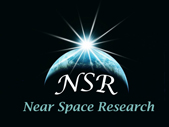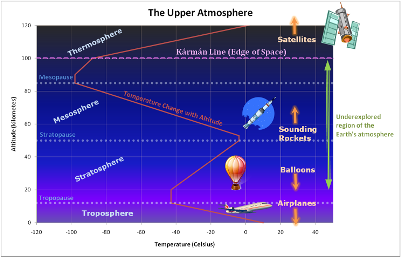

| HOME |
| NEWS & UPDATES |
| NEAR SPACE FACTS |
| FLIGHT HISTORY |
| SPONSORS |
| TNU PHYSICS |
Earth and space as seen from 93,000 feet |
Balloon in the Stratosphere |
![]()
Near Space Facts |
"Near space" is an underexplored region of the earth's atmosphere above the troposphere and below the altitudes where satellites orbit the earth. An imaginary line at a distance of 100 kilometers above sea level (the "Kármán line") is commonly used to mark the boundary between the atmosphere and outer space. The troposphere, where planes can fly and weather occurs, is the lowest layer of the atmosphere, extending to about 12 km. Our balloon experiments reach peak altitudes of about 30 km, placing them in the middle of a region known as the stratosphere. This may seem like it is still a long ways from space. However, since density drops off exponentially with altitude, at 30 km we are above 99% of the earth's atmosphere, and experience extreme space-like conditions. Temperatures can plummet to minus 90 degrees Fahrenheit and the balloon is exposed to cosmic rays and high levels of UV radiation. In many ways the environment in the earth's stratosphere is similar to the conditions on the surface of Mars, whose surface atmospheric pressure is about 1% of Earth's. 
|